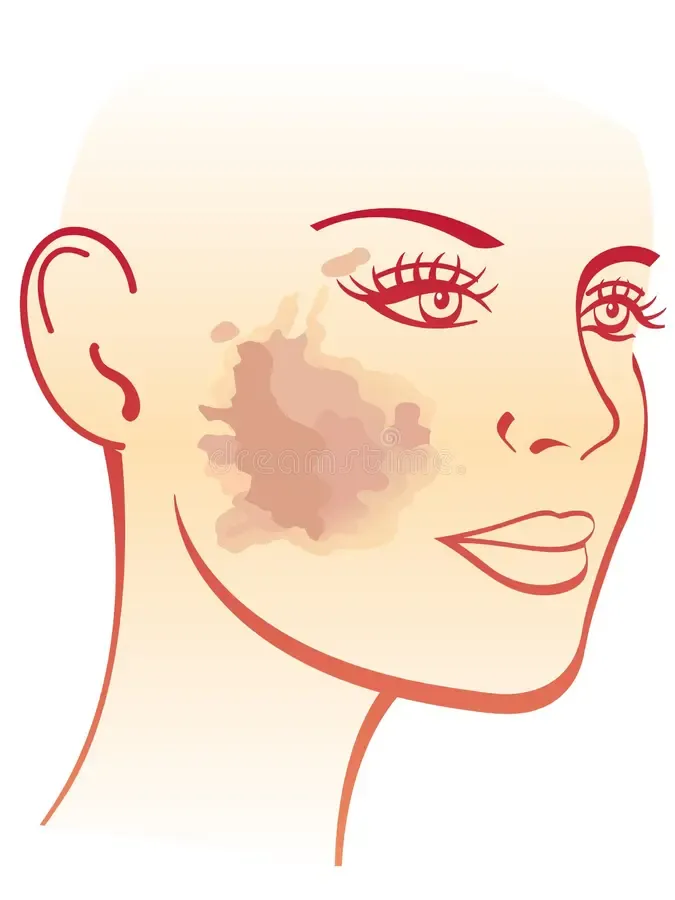What Causes It?
Sun Exposure (UV radiation) – Stimulates melanocyte activity.
Hormonal Changes – Pregnancy (chloasma), oral contraceptives, HRT.
Genetic Predisposition – Family history increases risk.
Cosmetic Products – Irritants can trigger pigmentation.
Medications – Certain anti-epileptics, photosensitizing drugs.
Signs & Symptoms
Brown, grayish-brown, or tan flat patches
Symmetrical distribution on the face
Irregular borders
No pain or itching (asymptomatic)
